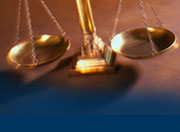  |
 |
|
Things every client should know about trademarksPatents, trademarks, copyrights, and trade secrets protect different things.Generally speaking, the patent law protects inventions while our laws relating to copyrights, trademarks, and trade secrets protect something else (see further below). What is an invention? In casual terms, inventions are things like tools, machines, computer programs, circuits, processes, articles of manufacture, and even chemical compositions. Specifically, the patent statute defines an invention as a tangible, specific idea that satisfies three (3) requirements: (a) it must be useful; (b) it must be new; and (c) it must be nonobvious (e.g., surprisingly different from that which has come before). It also defines an invention as any improvement relating to an invention, and that’s critically important, because many inventions are improvements inventors make to the ideas of others. Generally speaking, trade secret law protects useful information. Many times, the information protected by trade secret law is information which cannot be (or has not been) protected by patent. In general, in most jurisdictions, there are two important requirements for something to qualify as a trade secret: (a) the information must be useful; and (b) it must be kept secret. Examples of the kinds of things that can be protected by trade secret law include customer lists, contact information, supplier data, formulas, patterns, compilations, programs, device designs, methods, techniques, and processes. Generally speaking, trademark law protects symbols. These symbols, whether they are words, phrases, acronyms, graphics, logos, or slogans are the commercial language we use to concisely and efficiently tell people who we are and where our products come from. Generally speaking, copyright law protects original creative expression. Thus, copyright law protects original works of authorship regardless of the form in which these works appear. So, in contrast to trademarks which tend to relate to the name of the products and the company that produced them, copyright law is used to protect the underlying (lengthier) work itself. Thus, one might copyright literary works (e.g., poems, short stories, novels), musical works (including the accompanying words), sound recordings, dramatic works, motion pictures, pictorial / graphic works, sculptural works, architectural works, and even pantomimes and choreographic works. A simple example can clarify these concepts. Consider the shoe company Nike. Because the design of high quality sports shoes involves a great deal of research and development, Nike might hire a patent attorney to file a patent application so that it could secure patents for its more important shoe designs. Similarly, it might file not one but three separate trademark applications for: (a) the word “Nike”; (b) the company logo (the “swoosh”) you see on caps and shirts; and (c) one of its slogans (e.g., “Just do it.”). It might protect some of its advertising copy, artistry and branding campaigns through copyright. And, finally, it might employ trade secret protection to protect the names and bulk pricing / typical negotiating terms it employs in dealing with important suppliers and distributors. A closing comment regarding your “intellectual property”: The term “intellectual property” is commonly used to describe generally these four kinds of legal rights (that is, patent, copyright, trademark, and trade secret rights) that companies have in their intangibles. While the term can be a helpful one, it can also lead to a lot of confusion. Why? Because even though there are indeed some parallels to be drawn between patents, copyrights, trademarks, and trade secrets, the simple fact of the matter is that they are highly distinct forms of legal protection. They are defined differently. They confer different kinds of legal rights. They feature different challenges in licensing and litigation. And, finally, the costs associated with obtaining them are very, very different (patents generally being the most expensive, trade secrets generally being the least expensive). Our principal office is in Richardson, Texas. Our clients are nationwide. Law Office of Paul W. Fulbright, PLLC |
| Legal Services | About the Firm | Training & Seminars | FAQs | Intellectual Property Essentials | This Business of Innovation | Working with Attorneys | IP Legal News | Useful Links | Website Terms of Use | Contact the Firm | Home |
| Copyright 2007 Law Office of Paul W. Fulbright, PLLC. All rights
reserved. Registered patent attorney Paul W. Fulbright is responsible for the content appearing at this site. Principal office location: 2003 J J Pearce Drive / Richardson, Texas 75081 / 972-907-8679 / Email Us. |

